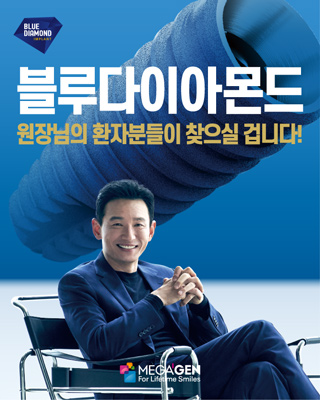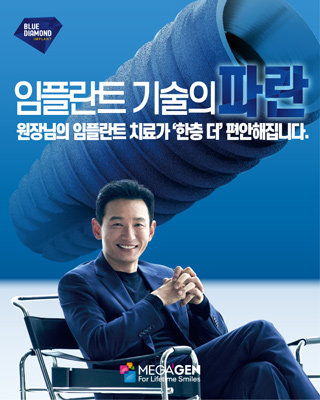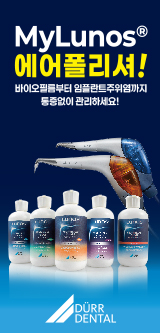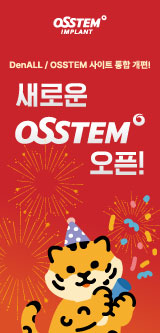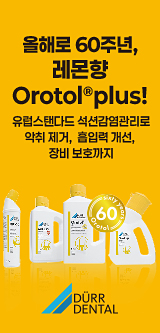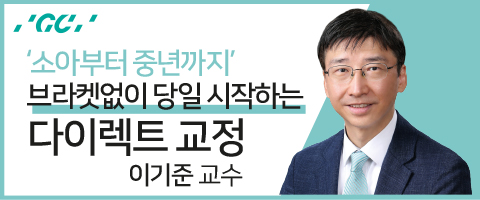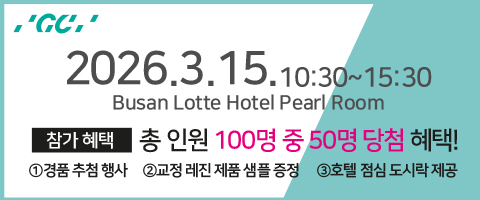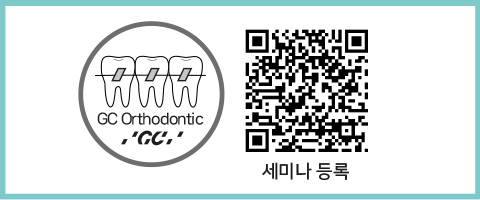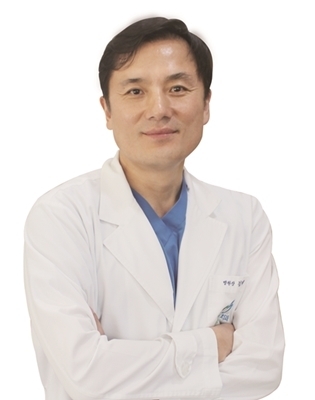
김혜성 이사장(서울치대 졸업, 동대학원 박사)
사과나무의료재단의 이사장이자, 재단 산하 의생명연구소의 미생물 연구자이다.
구강미생물에서 시작해 장내 미생물, 발효 음식의 미생물까지 폭넓게 공부하며 몇 권의 책을 냈고 논문을 발표했다.
『미생물과의 공존』 『입속에서 시작하는 미생물이야기』 『미생물과 공존하는 나는 통생명체다』등 3권이 과학기술부 선정 우수과학도서를 수상했다.
얼마 전, 치과대학생들을 대상으로 구강미생물, 그중에서도 세균들이 공동체를 이뤄 생존력을 높인 바이오필름에 대한 온라인 강의를 했었는데, 한 학생이 질문을 보냈습니다. 내과 쪽에서는 세균이나 바이오필름을 주로 약으로 다루는 것 같은데, 치과 쪽에서는 스케일링과 같은 기계적 제거가 더 강조되는 듯한데, 그 차이가 뭐냐 하는 내용이었습니다.
전 이렇게 답했습니다. 바이오필름 제거의 gold standard는 기계적 제거하고요. 상처나 감염이 생겼을 때 가장 중요하고도 먼저 해야 할 일은 깨끗이 씻어내는 기계적 행위라고요. 치과의 스케일링과 치면세마, 피부의 상처 세척, 더러운 하수구를 솔 같은 기구로 닦아내는 것, 모두는 기계적으로 바이오필름을 제거하는 행위일 겁니다. 다만, 대장 속 세균들이 바이오필름을 만들어 장염이 생겨 복통과 설사를 하더라도, 장내 바이오필름을 기계적으로 제거하기가 쉽지 않으니, 할 수 없이 2nd choice로 항생제를 포함한 약으로 방어하는 것 뿐이죠.
그래서 구강의 바이오필름은 기계적 접근이 가능하다는 게, 치과의사로서 참 다행이란 생각을 늘 합니다. 또 치과의사는 바이오필름이 만드는 염증이란 우리 몸의 심오한 현상을 가장 잘 관찰할 수 있는 직업이기도 하지요.
그렇더라도, 다 알다시피 스케일링과 치면 세마 같은 바이오필름의 gold standard도 한계가 없는 것은 아닙니다. 일단 바이오필름의 완전한 제거가 어렵죠. 특히 치은연하 치석과 바이오필름을 치면세마나 소파술로 제거할 경우, 치주포켓이 깊을수록 장님 코끼리 만지기식의 blind technic일 수밖에 없습니다.
또 설사 바이오필름을 잘 제거했다 하더라도 구강 내 바이오필름은 바로 형성됩니다. 구강에는 늘 상주 세균을 포함한 수많은 세균들이 살고 있고 음식을 늘 먹으니 구강 내 세균들 역시 먹고살 만한 에너지가 충분한 공간이니까요. 특히 치주포켓이 깊은 곳의 바이오필름일수록 기계적 제거도 어렵고, 빠른 재형성 역시 피할 수 없습니다.
그런 이유로, 치과에서도 바이오필름을 기계적으로 제거하는 행위 외에, 부가적인 수단을 사용해 왔습니다. 항생제와 소염제를 포함한 약이나, 헥사메딘을 포함한 구강가글제들이 그것들입니다.
한때 잇몸약으로 광고하다가 식약처의 제제로 잇몸보조제로 등급을 낮춰 여전히 비슷한 광고로 소비자들을 현혹하고 있지만, 그 효과는 여전히 의심스러운 여러 제제들도 그것들 중 하나일 겁니다.
이중에서도 바이오필름을 향한 가장 직접적인 효과를 갖고 있고, 그래서 치과에서도 가장 흔히 처방되는 약 중 하나는 바로 항생제일 겁니다. 항생제는 말 그대로 세균을 향한 약으로, 항균 정균 효과를 통해 구강 내 바이오필름을 파괴하고 억제합니다.
하지만, 다 알다시피 바이오필름에 대한 항생제의 효과는 생각보다 크지 않습니다. 바이오필름을 제거하지 않고 항생제만 투여할 경우, 생각보다 훨씬 용량이 많고 투여기간이 긴 항생제가 필요하다는 것을 우리는 늘 임상에서 접합니다. 게다가 또 재발되기도 하죠. 무엇보다 항생제는 내성이 문제라 항생제 저항세균은 전 인류의 가장 중요한 공중보건의 문제이기도 합니다.
이런 이유로 바이오필름을 제어할 수 있는 물질인 항생제에 대한 대안들이 연구되고 시도되어 왔습니다. 그리고 그 대안의 대표격으로 현재 프로바이오틱스가 등장해 왔습니다. 항생제(anti-biotics)와 완전히 대비되는 pro-biotics는 말 그대로 우리 몸에 유익한 미생물을 찾는 과정입니다.
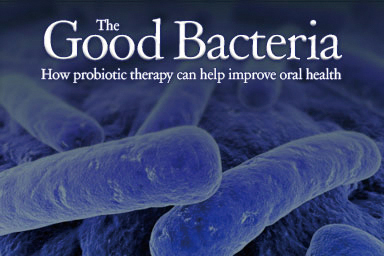
안티바이오틱스가 내 몸의 생명(bio. 세균)을 파괴(anti) 함으로써 내 몸을 지킨다면, 프로바이오틱스는 내 몸 친화적(pro) 생명(bio. 세균)을 통해 내 몸을 지킨다는 개념입니다. 대표적으로 우유의 유당을 발효해 산을 만듦으로써 요거트를 인간에게 오랫동안 제공해온, 락토바실러스나 비피도박테리움이 가장 대표적인 프로바이오틱스입니다. 우리나라 식약처는 이들 락토바실러스나 비피도박테리움 속(genus)에 속하는 19종(species)을 안전한 등급으로 고시하여, 프로바이오틱스의 상품화를 허용하고 있습니다. 우리나라 김치에 들어있는 류코노스톡(L. leuconostoc)이나 된장이나 나또를 만드는 고초균(B. subtilis) 같은 것도 우리의 토종 프로바이오틱스라 할 만 합니다.
낙농을 자주 했던 서유럽의 유산균이나 야채를 선호했던 우리나라의 고초균은 각각 인류가 자신의 생활 조건에서 찾아내어 오랜 시간 동안 몸으로 검증해온 공생진화균들일 겁니다.
주로 장 건강에 쓰였던 프로바이오틱스가 구강건강에도 도움이 될 수 있다는 아이디어는 지극히 자연스럽습니다. 그리고, 이런 흐름은 21세기 벽두부터 서서히 치과계에 탐색되어 온 것으로 보입니다.(Meurman 2005) 아이들에게 프로바이오틱스 유산균 음료를 먹였더니 치아우식증을 가져올 구강 내 세균들의 수가 감소합니다.(Näse, Hatakka et al. 2001)
프로바이오틱스와 치주질환의 관계를 정리한 최근의 리뷰논문에 의하면, 구강 내 바이오필름 제거의 골든스탠다드인 스케일링과 치면세마와 함께 프로바이오틱스를 보조적으로 추가 투여한다면, 매우 일관되고, 그 임상적·미생물학적 효과가 더 좋아졌음을 보여줍니다.(Nguyen, Brody et al. 2020)
한 예로 락토바실러스 루테리(L. reuteri)를 이용한 무작위 임상실험에서, 루테리는 포켓 깊이를 감소시키고, 구강 내 대표 병원균인 진지발리스(P. gingivalis) 를 감소시키는 효과를 보여줍니다.(Teughels, Durukan et al. 2013) 또 한 연구는 매우 인상적이게도, 치주질환 치료 시 포켓 내에 삽입하는 항생제인 테트라사이클란 스트립보다 더 나은 효과의 가능성을 보여주기도 합니다.(Boyeena, Koduganti et al. 2019)
이렇게 프로바이오틱스가 효과를 내는 이유는 다른 장 건강에 내는 효과와 동일해 보입니다. 프로바이오틱스 세균들이 직접 병원균과 싸우기도 하고, 먼저 자리를 차지해 다른 세균들이 정착하는 것을 방해하기도 하고, 세균들끼리의 신호를 차단해 바이오필름을 못 만들게 하고, 인간의 면역력과 협업해 항균 효과를 내기도 합니다.(Barzegari, Kheyrolahzadeh et al. 2020) 결과적으로 병원균과 걔들이 만드는 바이오필름을 줄게 하겠죠.
이런 이유로, 치과에서도 프로바이오틱스에 대한 관심이 높아지길 기대해 봅니다. 먹는 타블릿뿐만 아니라껌, 가글액, 치주포켓에 넣은 스트립 같은 것도 사용해 볼만하다고 봅니다.
또 소아과나 내과에서 정장생균제란 이름으로 프로바이오틱스가 보험코드로 잡힌 것처럼, 치과에서도 그런 방식으로 보험화까지 되면 더욱 좋을 듯합니다. 바이오필름을 기계적으로 제거하는 것 뿐만 아니라, 미생물학적으로도 제어가 가능하다면, 구강위생관리에 더 큰 무기가 생길 테니까요.
Barzegari, A., et al. (2020). "The Battle of Probiotics and Their Derivatives Against Biofilms." Infection and drug resistance 13: 659-672.
Biofilm-related infections have been a major clinical problem and include chronic infections, device-related infections and malfunction of medical devices. Since biofilms are not fully available for the human immune system and antibiotics, they are difficult to eradicate and control; therefore, imposing a global threat to human health. There have been avenues to tackle biofilms largely based on the disruption of their adhesion and maturation. Nowadays, the use of probiotics and their derivatives has gained a growing interest in battling against pathogenic biofilms. In the present review, we have a close look at probiotics with the ultimate objective of inhibiting biofilm formation and maturation. Overall, insights into the mechanisms by which probiotics and their derivatives can be used in the management of biofilm infections would be warranted.
Boyeena, L., et al. (2019). "Comparison of efficacy of probiotics versus tetracycline fibers as adjuvants to scaling and root planing." Journal of Indian Society of Periodontology 23(6): 539-544.
CONTEXT: Both gingivitis and periodontitis are due to the detrimental effects of the microbe-laden biofilm. The mainstay of periodontal treatment is, therefore, the disruption of this biofilm by scaling and root planing (SRP). Other treatment protocols such as systemic antimicrobials have been administered as adjuvants after scaling and root planning. However, due to antimicrobial resistance, as well as a shift of the flora from a symbiotic to a dysbiotic one, this mode of treatment has its shortcomings. Thus, local drug delivery has gained prominence as a therapeutic tool. AIMS: The aim of this study is to compare the efficacy of subgingivally delivered probiotics as a monotherapy, in combination with tetracycline fibers, and tetracycline fibers alone after SRP. SETTINGS AND DESIGN: This study was a parallel arm, randomized clinical and microbiological study. Thirty patients with chronic periodontitis aged between 20 and 50 years were selected from the outpatient ward of a tertiary referral care hospital in Hyderabad and equally divided into three groups. MATERIALS AND METHODS: This study was conducted from January 2017 to February 2017 and ethical clearance was obtained from the institutional ethical committee. STATISTICAL ANALYSIS USED: Mean values and standard deviations were calculated for Plaque Index, Sulcular Bleeding Index (SBI), probing depth (PD), and microbial colony-forming units, for all the three groups at different time intervals. Paired "t-test" was used for intragroup comparison and Student's "t-test" for intergroup comparison. Results were regarded as statistically significant when P < 0.05. RESULTS: Intragroup comparison yielded significant improvement in all the variables (P < 0.0001). However, intergroup comparison showed statistically significant differences pertaining to the PD (P < 0.001) and SBI only (P < 0.001), between Group A and Group B and Group B and Group C respectively. CONCLUSIONS: Group A and Group C showed better results than Group B.
Meurman, J. H. J. E. j. o. o. s. (2005). "Probiotics: do they have a role in oral medicine and dentistry?" 113(3): 188-196.
Näse, L., et al. (2001). "Effect of long–term consumption of a probiotic bacterium, Lactobacillus rhamnosus GG, in milk on dental caries and caries risk in children." 35(6): 412-420.
Nguyen, T., et al. (2020). "Probiotics, including nisin‐based probiotics, improve clinical and microbial outcomes relevant to oral and systemic diseases." 82(1): 173-185.
Teughels, W., et al. (2013). "Clinical and microbiological effects of Lactobacillus reuteri probiotics in the treatment of chronic periodontitis: a randomized placebo-controlled study." J Clin Periodontol 40(11): 1025-1035.
AIM: The aim of this randomized placebo-controlled clinical trial was to evaluate the effects of Lactobacillus reuteri-containing probiotic lozenges as an adjunct to scaling and root planing (SRP). MATERIAL AND METHODS: Thirty chronic periodontitis patients were recruited and monitored clinically and microbiologically at baseline, 3, 6, 9 and 12 weeks after therapy. All patients received one-stage full-mouth disinfection and randomly assigned over a test (SRP + probiotic, n = 15) or control (SRP + placebo, n = 15) group. The lozenges were used two times a day for 12 weeks. RESULTS: At week 12, all clinical parameters were significantly reduced in both groups, while there was significantly more pocket depth reduction (p < 0.05) and attachment gain (p < 0.05) in moderate and deep pockets; more Porphyromonas gingivalis reduction was observed in the SRP + probiotic group. CONCLUSIONS: The results indicate that oral administration of L. reuteri lozenges could be a useful adjunct to SRP in chronic periodontitis.




